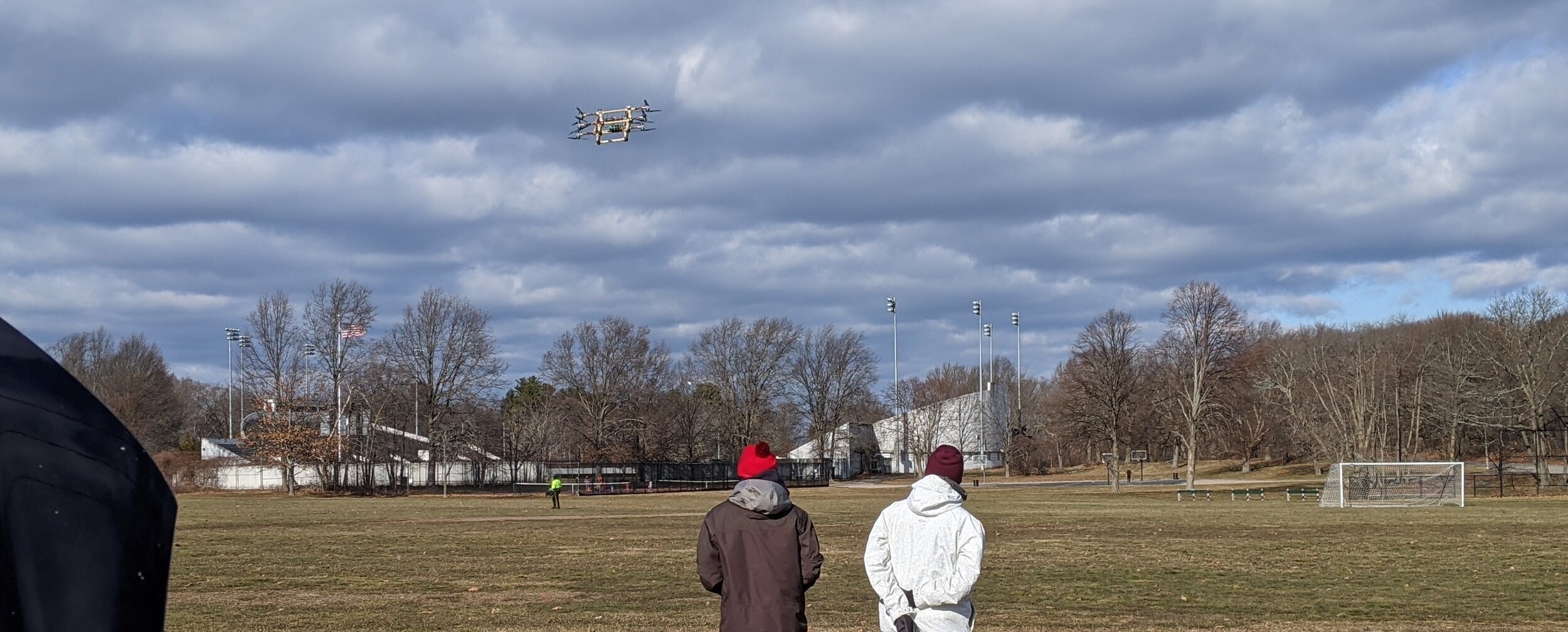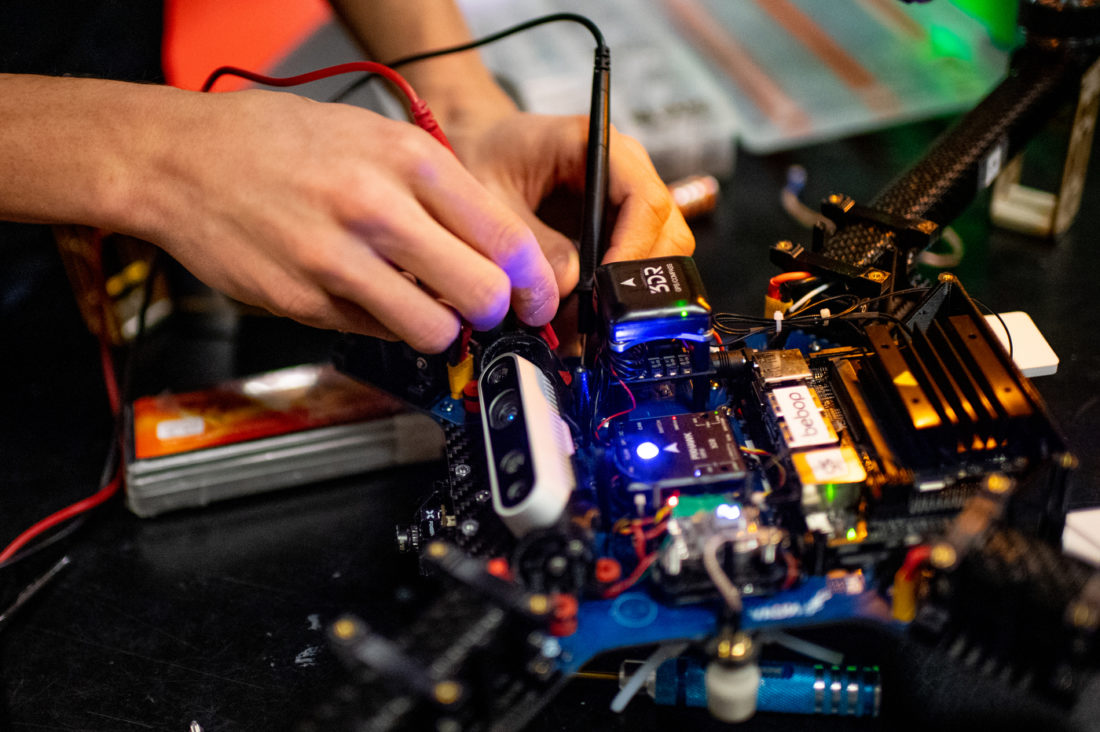
NUAV is AerospaceNU’s drone project, and is involved in both the racing and R&D divisions of UAV work.
Their most recent initiative, Swarm Carrier, researched the uses of deployable UAV swarms for rapid surveying and search missions. They developed and built a 30’’ propeller, ultra-heavy-lift dodecacopter capable of deploying up to 6 autonomous swarm drones. The UHL carries 2 custom drop bays (multi-drop mechanisms) which intelligently deploy smaller vehicles for subsequent autonomous missions. Upon completion of the mission, these drones re-integrate into their payload bays and the UHL returns to its home location. After several years of development, Swarm Carrier has transitioned to a Capstone project for its final implementation.
Now, NUAV has moved on to their next project: ADAPTS! The ADAPTS (Autonomous Dynamic Airborne Payload Transfer System) project is exploring the capability of autonomous payload swapping during flight. This will enable payloads or batteries to be passed from one UAV to another in-air, greatly increasing the effectiveness of UAV delivery and operational capabilities through range extension.
Like all our projects, no experience is required - they’ll teach you everything they know about building and flying multi-rotor drones!
Racing
NUAV’s racing team participates in competitions from local MulitiGP to CDRA and IUDRO races, and has reached the leader board in all of them.
The team is very education focused: every year, Quad Camp’ teaches FPV piloting and basic quadcopter build and repair skills to anyone interested. Flyouts are held every weekend, where students can learn to fly and practice racing!
Hardware
The Hardware subgroup handles both the electrical and mechanical systems of the vehicles.
This semester, they’ll be developing multirotor UAVs with the ability to swap 1.5kg payloads autonomously during flight, building off the Swarm Carrier’s swarm drone architecture. This includes making a standard payload interface that allows for different payloads to be used with the swap mechanism.
In addition, they’ll be wrapping up the Tarsier initiative. This is a camera gimbal system designed to receive smooth video feed on drones during flight. Tarsier will give ADAPTS drones the ability to detect, track, and approach each other before initiating a payload swap.
Software
NUAV Software has spent the past year developing autonomous behavior for drones flying together, as part of the Swarm Carrier initiative. They’ve recently remade their codebase to make it more user-friendly for new members developing code for a virtual drone system.
This semester, they’ll be expanding their past work to accommodate autonomous payload-swapping for ADAPTS. This expansion includes both high-level mission control and communication and solving the complex problem of aligning multiple vehicles.
Meeting times: General/Research: Tues/Thurs 8-10pm
Racing: Tues/Thurs 8-10pm; Flyouts on weekends










